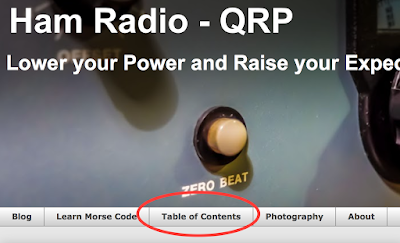Vintage Wiring
In honor of the upcoming SKN I wanted to spruce up my Kent Hand key by replacing the ratty cable that I'd hastily made back in 2015 by hacking a cheap, old electric guitar cable with something more suitable to the Kent's grande and imposing nature.
I also wanted a vintage look. I've always liked the look of old fabric covered wires, although not their dubious safety record. But alas, modern times and a desire in some quarters for a "retro-look" for antique lighting gives us cotton covered, dual conductor, twisted wire. The actual stranded wire core is covered by teflon covering for proper insulation.
You can't just use wire cutters or a wire stripper on the cloth covered wires. That just makes a fabric "blob" (ask me how I know). I used a very sharp knife to cut the fabric around the insulation where I was going to strip, then used a wire stripper on the teflon covered portion of the wire. Also note that cloth fabric will fray when it's been cut so use some heat shrink tubing to neaten it up, or if you really want to get fancy; lash the fraying bit with some thread for a half inch or so and tie it off. I'm not patient enough to do that so I used heat shrink tubing. I used another piece of larger heat shrink around both conductors further up the wire to keep them from unwinding.
If you use Rayon covered wire be careful with the heat gun when you shrink the tubing, as the Rayon probably has a low melting temperature.
Lastly, since the new cable is un-shielded, keep lengths reasonably short so as not to become RF conductors in the shack.
That's all for now...
So lower your power and raise your expectations.
72/73
Richard AA4OO
http://hamradioqrp.com
I also wanted a vintage look. I've always liked the look of old fabric covered wires, although not their dubious safety record. But alas, modern times and a desire in some quarters for a "retro-look" for antique lighting gives us cotton covered, dual conductor, twisted wire. The actual stranded wire core is covered by teflon covering for proper insulation.
 |
| Cotton covered wire to suit the key |
Making your cable
Fabric covered wire is available from a number of sellers and provides a vintage look for your old CW straight key. There appear to be mainly two different types of fabric covered wires, Rayon and Cotton. The Rayon covered wires look "shiny" due to the synthetic material, they also are likely sturdier. Cotton covered wires are not shiny and get a bit fuzzy with handling. I went with Cotton covered wire but I'm sure Rayon would be fine too.You can't just use wire cutters or a wire stripper on the cloth covered wires. That just makes a fabric "blob" (ask me how I know). I used a very sharp knife to cut the fabric around the insulation where I was going to strip, then used a wire stripper on the teflon covered portion of the wire. Also note that cloth fabric will fray when it's been cut so use some heat shrink tubing to neaten it up, or if you really want to get fancy; lash the fraying bit with some thread for a half inch or so and tie it off. I'm not patient enough to do that so I used heat shrink tubing. I used another piece of larger heat shrink around both conductors further up the wire to keep them from unwinding.
If you use Rayon covered wire be careful with the heat gun when you shrink the tubing, as the Rayon probably has a low melting temperature.
Lastly, since the new cable is un-shielded, keep lengths reasonably short so as not to become RF conductors in the shack.
That's all for now...
So lower your power and raise your expectations.
72/73
Richard AA4OO
http://hamradioqrp.com










